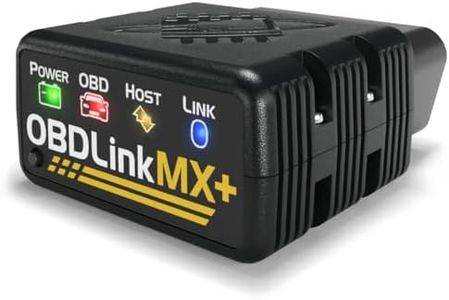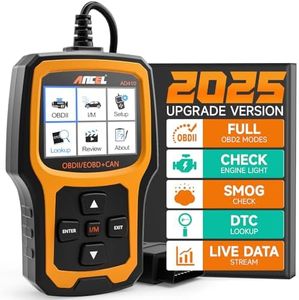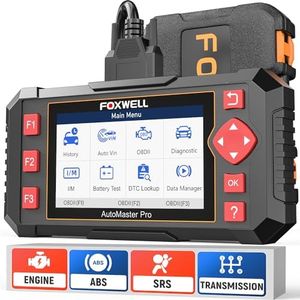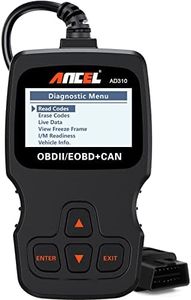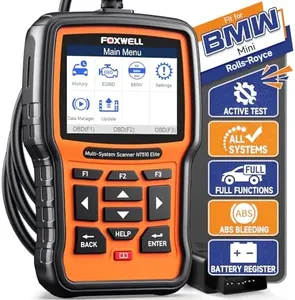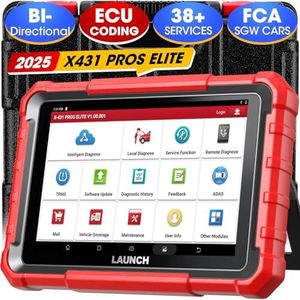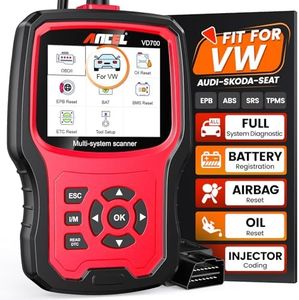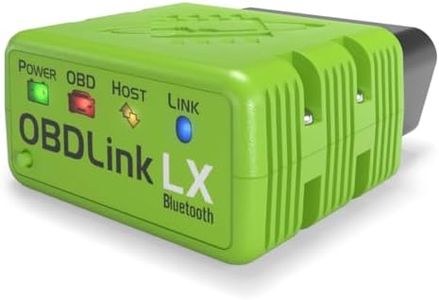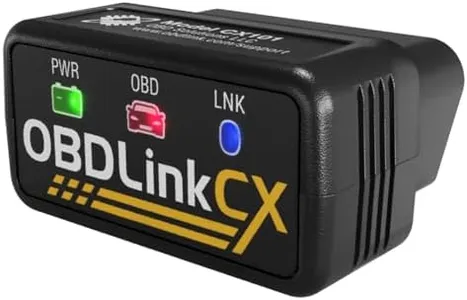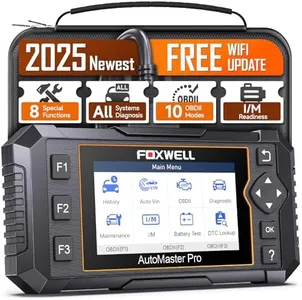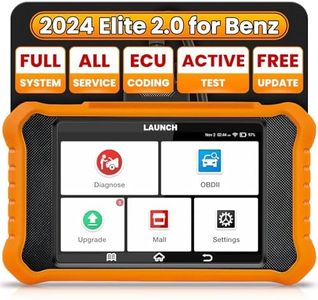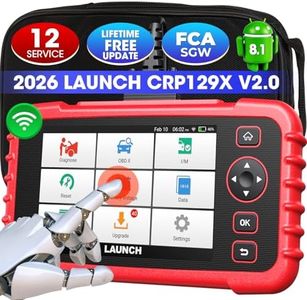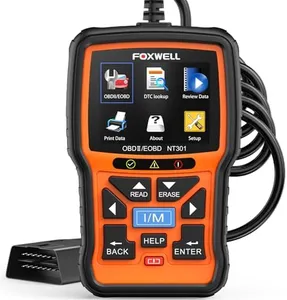We Use CookiesWe use cookies to enhance the security, performance,
functionality and for analytical and promotional activities. By continuing to browse this site you
are agreeing to our privacy policy
10 Best Obd Scanners
From leading brands and best sellers available on the web.Buying Guide for the Best Obd Scanners
Choosing the right OBD scanner can really help you maintain your vehicle, diagnose issues early, and potentially save money on repairs. OBD stands for On-Board Diagnostics, and an OBD scanner plugs into your vehicle to read diagnostic data from the car’s computer. Whether you want a simple tool for checking why the engine light is on, or a more advanced scanner to monitor performance and deeper systems, understanding the main features will help you pick something that's a good fit for your needs and your level of expertise.OBD Version CompatibilityOBD scanners are primarily designed to work with OBD2, the standard for cars sold in most parts of the world from the mid-1990s onward. If you're using a vehicle built before 1996, you might need an OBD1 scanner, which is not compatible with OBD2 models. Always check your vehicle’s year and make sure your scanner supports it—a mismatch means you won’t be able to connect or read any codes.
Supported Protocols and Vehicle CoverageThis refers to the types of communication methods and car brands the scanner can work with. Some scanners cover just domestic vehicles, while advanced ones work with Asian and European models too. If you have a common car brand, most basic scanners will work, but if you or relatives have multiple or less common vehicles, look for one that supports a broader range of manufacturers and protocols, so you’re not limited in the future.
Functionality (Basic vs. Advanced)The range of things an OBD scanner can do varies. Basic models simply read and clear engine codes, mostly useful for checking why a warning light is on. More advanced scanners can provide live data streams, test certain components, or access modules beyond the engine, such as transmission, ABS, or airbags. If you simply want to read codes and clear them, a basic model is fine, but for deeper diagnostics or more detailed car maintenance, an advanced one is worthwhile.
User Interface (Display and Controls)The way you interact with the scanner matters a lot. Some have their own screen and buttons, while others send data wirelessly to a smartphone app. Standalone models are self-contained and easy to use right out of the box, ideal if you prefer not to use a phone or deal with apps. Bluetooth or Wi-Fi models are compact and need a smartphone—they offer more features and better visuals but require some comfort with mobile apps. Choose based on your tech comfort and how you prefer viewing information.
Update CapabilityCars evolve, and the systems they use get updated, so having an OBD scanner that can be updated is a plus. Some let you update their software online, which means they’ll stay useful for newer or different vehicles over time. If you want a tool that will last as cars become more advanced, make sure updates are possible and easy to do.
Additional FeaturesSome scanners include extra features like emission test readiness, battery checking, mileage correction, or even the ability to customize certain car behaviors. While these are not critical for everyone, they can add a lot of value for those interested in deeper car maintenance or tinkering. If you just want to turn off warning lights, you won’t need these, but if you’re a hobbyist or like having extra info, keep an eye out for these features.
